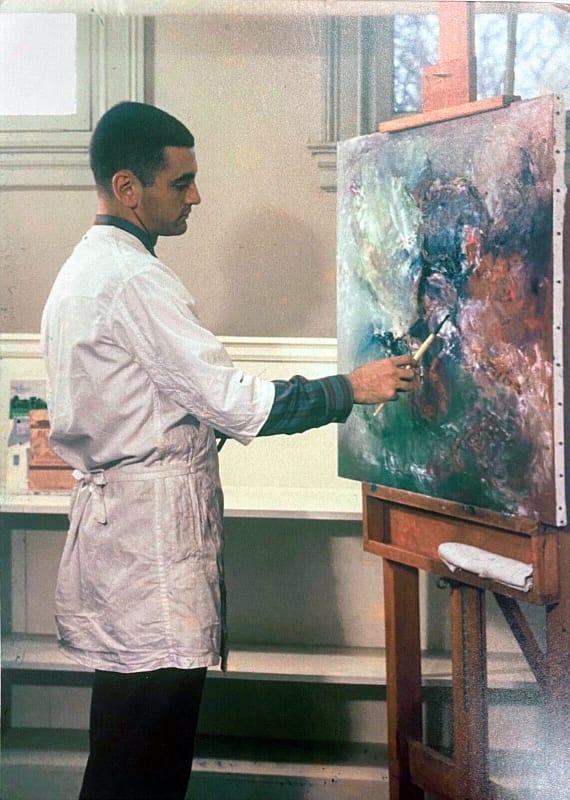University of Delaware Professor Emeritus of Art Julio daCunha was born in 1929 Bogota, Colombia. After completing his master of fine arts degree at Cranbrook Academy of Art, daCunha arrived in Delaware in 1956 to teach at the University of Delaware. The artist places himself within the Spanish tradition and cites the influences of Arshile Gorky, Paul Klee, Pablo Picasso, Roberto Matta, and Francisco de Goya. While at the University, daCunha served as department chair from 1966 to 1969 and taught until his retirement in 1994, influencing generations of students who studied within the program. He was honored in 2020 with the Distinguished Artist Series exhibit assembled from the collections of the Delaware Art Museum, public institutions, and private collections showcasing the impact daCunha had on the community in which he lived.


